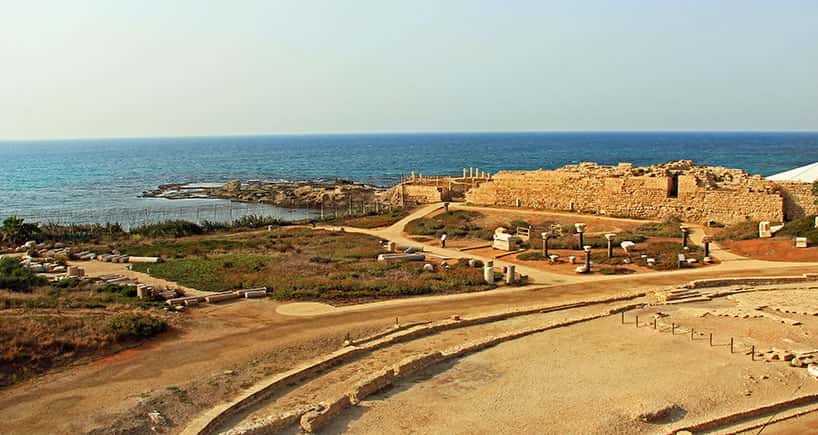The ancient Mediterranean seaport of Caesarea Maritima is perhaps one of Israel’s most famous attractions. Located about halfway between Tel Aviv and Haifa on the Mediterranean Coast in the lower Galilee, the city was first built in the third century BC, but its popularity and importance grew when Herod the Great established it as an urban center and harbor.
Herod the Great expanded the town, and renamed it Caesarea Maritima, as a tribute to Augustus Caesar. The city was the marvel of its day, complete with temples, an amphitheater, a palace, a hippodrome, baths, markets, and roads. Every five years, the city held athletic exhibitions and gladiator games. Herod constructed an artificial harbor with a wave-breaker wall, and aqueducts to bring fresh water from almost 10 miles away. He also commissioned channels to be built throughout the city, for the sea water to enter and remove the city’s waste.
This ancient port city also gained prominence in early church history. It was the governing seat of Pontius Pilate during the time of Jesus. It is also where Simon Peter converted the Roman centurion, Cornelius, to faith in Jesus (Acts 10). The Apostle Paul was also imprisoned here for two years.
In 13 BC, Caesarea Maritima became the capital of the Roman province of Judea. Although the city was a cultural and engineering wonder, tensions erupted between the Jewish and Roman inhabitants of the city. In 66 AD, a synagogue was desecrated, which led to fighting and the massacre of thousands of Jews in the city. These events triggered the Jewish revolt against Rome.
During the Byzantine period, Caesarea flourished as a center of Christian learning and relied heavily on trade. The main church in the city was built during the 6th century on top of a Roman temple.
In 638, Caesarea was captured by the Muslims, turning it into an agricultural center. In 1101 AD, the city was conquered by Baldwin I during the first crusade and refortified by the Crusaders. In 1187, Saladin recaptured the city and held it for four years before the Crusaders reconquered it. In 1251, Louis IX fortified the city with high walls and a deep moat. However, in 1265, the city was captured by the Mamluks who destroyed the fortifications.
Caesarea was left in ruins until a fishing village was built on the ruins of the Crusader fortress in 1884 by refugees. By 1945, the city had a population of 960. By 1948, the city had been all but abandoned by its inhabitants during the War of Independence.
Excavations began in the 1950s and continue to today. Archaeologists uncovered the Roman theater, hippodrome, a Roman temple, the city walls, castle, and a Crusader church.
Today, visitors can see snapshots of Caesarea’s amazing history:
- An ancient inscription bearing the name of Pontius Pilate.
- The Roman theater that is not only magnificent, but its spectacular view of the Mediterranean is unmatched.
- The Roman hippodrome where chariot races entertained the residents.
- The Crusader period moat that protects the harbor.
- The Roman aqueduct that brought fresh water from the Carmel Mountains.
Caesarea also has an underwater museum, where divers can explore the ancient harbor with waterproof maps. By the way… avid golfers can rejoice — the city is also home to Israel’s premier golf course!















